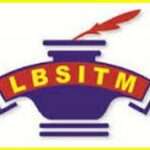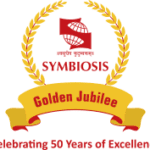The Common Management Admission Test (CMAT) is a nationally recognized entrance examination conducted by the National Testing Agency (NTA) in India. It is a competitive examination that serves as a gateway for admission to various postgraduate management programs such as MBA, PGDM, and similar courses offered by AICTE-approved institutions across the country. CMAT is conducted annually, and it evaluates candidates’ aptitude in various areas. Here is an article on CMAT Exam Pattern.
CMAT is a crucial step in the admission process for management programs. It helps institutions assess the skills and competencies of prospective students, ensuring that they have the necessary abilities to succeed in their chosen courses. The exam is considered significant for both candidates and institutions as it facilitates a fair and standardized evaluation process.
Exam Format and Structure
2.1 Computer-Based Test (CBT)
CMAT is conducted as a computer-based test (CBT), meaning that candidates take the exam on designated computers at authorized test centers. This format allows for efficient administration of the test and quick result processing.
2.2 Duration of the Exam
The total duration of the CMAT exam is 180 minutes or 3 hours. During this time, candidates are required to complete all the sections of the exam.
Sections of the CMAT Exam
3.1 Quantitative Techniques and Data Interpretation (QTDI)
The QTDI section of CMAT evaluates candidates’ mathematical and analytical skills. It typically consists of around 25 to 30 questions that cover topics such as arithmetic, algebra, geometry, number systems, and data interpretation. Candidates must solve mathematical problems and interpret data accurately in this section.
3.2 Logical Reasoning (LR)
The LR section assesses candidates’ ability to think logically and analytically. It usually contains 25 to 30 questions that involve topics like puzzles, seating arrangements, coding-decoding, and logical deductions. Candidates must apply logical reasoning to solve complex problems and puzzles.
3.3 Language Comprehension (LC)
Language Comprehension evaluates candidates’ language skills, including reading comprehension, grammar, and vocabulary. This section typically consists of 25 to 30 questions, which may involve reading passages and answering questions based on them. Candidates must also demonstrate their understanding of English grammar and vocabulary through sentence correction and fill-in-the-blank type questions.
3.4 General Awareness (GA)
The General Awareness section tests candidates’ knowledge of current events, general knowledge, and awareness of various topics. It usually contains 25 to 30 questions covering topics like current affairs, history, geography, sports, politics, and economics. Staying updated with current events and having a good general knowledge base is essential for performing well in this section.
Number of Questions in CMAT
4.1 Total Questions
The total number of questions in CMAT typically ranges from 100 to 125, depending on the specific exam. The number of questions may vary from year to year.
4.2 Section-wise Questions
The distribution of questions among the four sections (QTDI, LR, LC, GA) may vary from one CMAT exam to another. It’s essential for candidates to check the specific distribution for the year they plan to appear.
Marking Scheme
Marking System
CMAT follows a +4, -1 marking scheme. This means that candidates earn four marks for each correct answer and lose one mark for each incorrect answer. Unanswered questions do not carry any penalty.
5.2 Impact of Unanswered Questions
While there is no penalty for unanswered questions, candidates should use educated guesses if they are unsure about an answer. Random guessing may lead to negative marking and a reduction in the overall score.
Medium of Examination
- Registration Period: SNAP registration usually starts in August or September.
- Admit Card Release: Admit cards are generally available for download in December.
- Exam Date: SNAP is typically held in December, on a specific Sunday.
- Results: SNAP results are usually declared in January.
Section-wise Details
9.1 Quantitative Techniques and Data Interpretation (QTDI)
9.1.1 Topics Covered
The QTDI section covers a wide range of topics, including arithmetic (percentages, profit and loss, time and work), algebra (equations, inequalities), geometry (areas, volumes), number systems (LCM, HCF), and data interpretation (charts, graphs).
9.1.2 Question Types
Questions in this section may include multiple-choice questions (MCQs) and calculation-based problems. Data interpretation questions require candidates to analyze and interpret data presented in tables, charts, and graphs.
9.1.3 Importance of Time Management
Given the number of questions in the QTDI section, effective time management is crucial. Candidates should prioritize questions based on their comfort level and attempt those that they can solve quickly.
9.2 Logical Reasoning (LR)
9.2.1 Topics Covered
The LR section covers a variety of topics, including puzzles, seating arrangements, syllogisms, coding-decoding, logical deductions, and analogies.
9.2.2 Types of Logical Reasoning Questions
Logical reasoning questions in CMAT may include puzzles where candidates must arrange items or people based on given conditions, coding-decoding problems that involve deciphering codes, and analogies that test analogy-based reasoning.
9.2.3 Problem-Solving Strategies
Candidates should practice various types of logical reasoning questions to develop problem-solving strategies. This section rewards logical thinking and creative problem-solving skills.
9.3 Language Comprehension (LC)
9.3.1 Content and Topics
Language Comprehension evaluates candidates’ language skills. Topics covered include reading comprehension passages, sentence correction, sentence completion, and vocabulary-based questions.
9.3.2 Reading Comprehension
Reading comprehension questions require candidates to read passages and answer questions based on their understanding of the text. Strong reading skills are essential for this section.
9.3.3 Grammar and Vocabulary
Language comprehension also tests candidates’ knowledge of English grammar and vocabulary. Questions may involve identifying grammatical errors or selecting synonyms and antonyms.
9.4 General Awareness (GA)
9.4.1 Coverage of Topics
The General Awareness section encompasses a broad range of topics, including current affairs, historical events, geography, sports, politics, economics, and cultural knowledge.
9.4.2 Current Affairs
Staying updated with current events, both national and international, is critical for success in the GA section. Questions may be related to recent news and developments.
9.4.3 Historical and Cultural Knowledge
General awareness questions may also cover historical events, cultural heritage, and significant milestones in various fields. A well-rounded knowledge base is essential for this section.
Exam Day Guidelines
10.1 Reporting to the Exam Center
On the day of the CMAT exam, candidates must report to the exam center at the designated time mentioned in their admit cards. Arriving early is advisable to avoid last-minute stress.
10.2 Document Verification
Candidates are required to carry a printed copy of their CMAT admit card and a valid photo ID (such as Aadhar card, passport, driver’s license) for document verification at the exam center.
10.3 Biometric Verification
Biometric data, such as fingerprints and photographs, may be collected for verification purposes. Candidates should cooperate with this process.
10.4 Seat Allotment
Candidates will be assigned specific computer terminals at the exam center, and they should follow the instructions provided for seat allotment.
10.5 Instructions and Exam Conduct
Candidates will receive instructions from the invigilators regarding the exam pattern, timing, and other relevant details. It is essential to pay close attention to these instructions.
10.6 Section-wise Timing and Completion
Candidates must manage their time effectively, as each section has a designated time limit. Once the exam is completed or the sectional time limit is reached, candidates must submit their responses and leave the examination hall.
Preparation Tips for CMAT
Understanding the Syllabus
To prepare effectively for CMAT, candidates should thoroughly understand the syllabus for each section and create a study plan accordingly.
11.2 Effective Time Management
Practice time management during your preparation to ensure you can complete each section within the allocated time during the exam.
11.3 Mock Tests and Their Importance
Taking regular mock tests is essential to familiarize yourself with the exam format and assess your performance. Mock tests simulate the actual exam conditions.
11.4 Strengthening Weak Areas
Identify your weak areas and work on improving them. Allocate more time for topics that you find challenging and seek additional resources if necessary.
11.5 Developing a Reading Habit
Develop a reading habit to improve your language comprehension and general awareness. Reading newspapers, magazines, and online sources can be beneficial.
11.6 Staying Updated with Current Affairs
Stay updated with current events and general knowledge by reading newspapers, magazines, and online sources. Being well-informed is crucial for the General Awareness section.
11.7 The Importance of Revision
Allocate time for revision, especially in the weeks leading up to the exam. Revision helps reinforce what you’ve learned.
11.8 Practice for Interviews and Group Discussions
Many management programs include interviews and group discussions as part of their selection process. Practice mock interviews and group discussions to enhance your communication and interpersonal skills.
CMAT Exam Pattern FAQ
Having a score of 200 in the CMAT exam will lead to a percentile of 81-89. 9. How much do you have to score in CMAT to get 90 percentile? A candidate needs to score around 340-345 to get 90 percentile in the CMAT exam
There are a total of 20 MCQ questions in the quantitative aptitude and data interpretation section of the CMAT 2024 syllabus. This section is divided under the headings geometry, arithmetic, number systems, algebra, and modern maths.
The best way to score 99 percentile is to look for the exam pattern, best books, syllabus, previous year’s question papers and appear for mock tests. Moreover, candidates must score 350 and above to get the 99 percentile in CMAT. Further, the scores are transformed into percentile using the normalization process.










